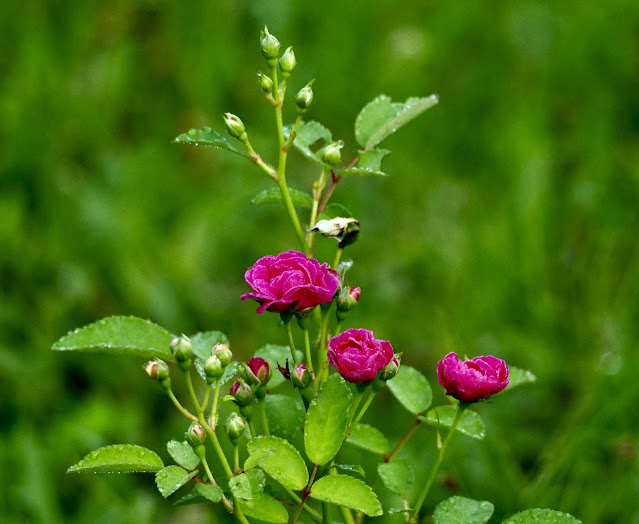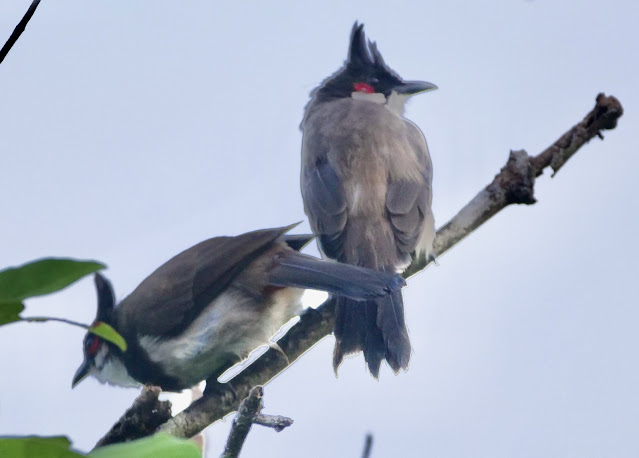One of the disturbing and restraining experiences that I have had to encounter during my association with children who were developmentally challenged for forty years, was a question that children in mid-childhood asked themselves, 'Why am I different from others'? If a physical limitation is pronounced and they could not function as well as other children, this question was even more pronounced in their mind.
The parents too had similar questions, 'Why has this limitation occurred to our child' ?
In the early years of my work, with less experience and insight, these questions passed through my mind and evoked very little emotion to feel the depth from where this question surfaced in the mind of a child or parents. It was therefore possible to regard it as their journey through grief cycle and I comforted myself about the resolution of this question in their mind, when they move out of the grief cycle.
In the late nineteen eighty, when an engineering graduate in his early adult life, who had some physical limitations asked me this question, it caused a stir within me. He worked in an office, where there was no access to a lift or a ramp. He lived in an apartment with his parents in the third floor which too had no lift. I foresaw him at snail's pace laboriously climb the steps and reach the place of work or home physically tired. I sensed that his spinal curvature was also going to be affected by this uneven walking. When he told me that the only physical exercise or sports that he could participate was swimming. The nearest swimming pool was ten kilometres away. He owned only a there wheeled automobile. He was anxious to travel through busy streets to reach there. That created another wave of discord within me. When he mentioned to me, that he was fond of getting married, but he is yet to find a woman who would accept his minimal physical limitations, although well employed and hailing from a family of accomplished parents with good social standing! When he said this, I wondered whether he stopped living with hope or pursue an aspiration!
I knew another person, with lower limbs paralysed needing a pair of crutches to walk. He moved about in motorised three wheeler in the city of Chennai. He was well placed in a managerial role and started a support centre at Chennai to help adults who were differently abled. When I arranged for a long interview with him to go beyond the layers of emotion associated with restrictions during his mid life, I was naive, with no real perspectives about the challenges of an adult living under several physical constraints. It was during the conversation, I got introduced to the multiple realities and feelings associated with being differently abled. He said, every evening, he had this question, 'how long will I be able to go on like this'? He already needed three surgeries and prolonged hospitalisation. He talked about the stare from some people with no indication of friendship of compassion in their face.
On another occasion, while visiting the L'Arche community at Chennai, I met young adults who lived in a home with assistants, sharing life experiences with them. One young person who had many abilities, but limited language skills, lived his life in his 'silent world' not being able to socialise enough. At the evening tea time, when Anna and I arrived to visit, he came towards us offering the snack he was served at tea time. Little later, we saw him sitting in a corner crying. His assistants mentioned that he would have outbursts of sorrow when he cannot communicate. His sorrow was reflected on his face when we left. We happened to see the note book he used, to draw. It had pages of sketches in grey colours, in a large book with no body else drawn beside him!
One book that introduced me to the world of unspoken feelings and thoughts of such adults with developmental challenges was The broken body, journey towards wholeness by Jean Vanier, the founder of L'Arche international. In the introduction he wrote:
So many of us flee from people crying out in pain,
people who are broken.
We hide in a world of distraction and pleasure
or in 'things to do'.
We can even hide in various groups of prayer
and spiritual exercises,
not knowing that a light is shining
in the poor, the weak, the lonely and the oppressed.
Or if we do not flee from suffering
perhaps we revolt in anger,
and this, too blinds us to the light of Jesus
glowing in people who are in pain'. (p1).
Following reading this book, Anna and I were invited to attend retreat that Jean Vanier conducted at St Andrew's church, Chennai in 1989, which brought another awareness about the 'light that remains lit in the painful body of a developmentally challenged person, an experience he or she can share with us only when we come close to feel and walk with them'.
This truth above became demystified gradually but in an intense and personal form in 1997, while reading the book, Adam, God's beloved written by Henri.J. Nouwen, the last book he wrote before his home call in 1996. He wrote: 'For many years I had reserved the word, incarnation for the historic event of God's coming to us in Jesus. Being so close with Adam, I realised that the 'Christ event' is much more than something that took place long ago. It occurs every time spirit greets spirit in the body. It is a sacred event happening in the present because it is God's event in people. That is what the sacramental life is all about. It is God's ongoing incarnation whenever people meet in God's name. My relationship with Adam was giving me new eyes to see and new ears to hear. I was being changed much more than I even anticipated' (p 41).
Rev Dr Henry J Nouwen was a Dutch catholic priest who was a professor of Psychology and theology in Yale and Howard universities, who resigned to live in the Day break community at Toronto to share his life with people who were developmentally challenged. Adam Arnett, a person with multiple needs became a friend of Henry. During those ten years till Adam moved on, one year before the home call of Henry, Henry had ten years of association with Adam as an assistant. Henry took a sabbatical after ten years, during which time he wrote this book, which could only be published only after Henry too moved on.
On the last Sunday morning service at St Andrew's church before Anna and I relocated at the Christian Medical College, Vellore in February, 1997 the Old Testament reading was from 2 Samuel 9:1-13. It is the Biography of Mephibosheth (painting above), the son of Jonathan, grandson of king Saul, who was 'crippled in both feet'. According to 2 Samuel 4:4, Mephibosheth slipped from the hand of his nurse at the age of five years and lost mobility independently. King David was wanting to give favour to all members of the family of king Saul. Mephibosheth since then dined at David's table and received all that was left of king Saul's wealth. David had to hide in fear from Saul for years even after David was anointed as the king. Yet, David was keen to show kindness to the kindred of Saul.
When Mephibosheth came to meet, King David, he prostrated himself before David and said: 'What is your servant, that you should regard, a dead dog like me'?(2 Sam :8).
This confession of Mephibosheth was etched in my memory since then.
How low a person with a developmental challenge can feel within himself or herself about his or her status as a person!
Having had this awakening within me, I have been on a journey since then to find a way to access the hidden emotional estimate children carry about themselves deep within. Usually, even those who are seriously challenged give indications of the self esteem they carry within themselves. The parents of such children also carry deviant impressions of their own self worth.
I realised in the recent years that, the earlier one is able to get an introduction to the self awareness about oneself, the better it is to help to augment the self esteem. to grow in awareness that he or she is 'the beloved' in the sight of God!
As professionals we are involved in a sacred mission to befriend those who are 'beloved of the creator God'. This changes our perspective at work and in relationships with their families. There is an ethos of sacredness and stewardship when we are professionally associated with developmentally challenged children and their families as they are beloved in God's sight.
I confess that it took a long journey and process to be guided to this ground breaking insight, about developmentally challenged children.
I have had some vivid experiences in the recent thirty years of how I experienced some children and their families minster to me as 'messengers of a loving God' ! They were radiant of God's presence and light in their being and doing!
There were days I drove home in the evening from my workplace with songs in my heart as one or two families on that day were 'wounded healers' touching my soul deeply!
The embracing posture of King David in the first painting, is a symbol of how he was already touched by Mephibosheth at the first meeting! King David needed Mephibosheth at his table to feel ministered with grace, peace and humility!
Those with neuro-developmental challenges are people who bring us a message of human vulnerability and resilience. They need a larger space in society to be present and influence!
It is rest of us, who can support them to redeem their true self of honour and dignity!
M. C.Mathew (text and panting from Internet)











































